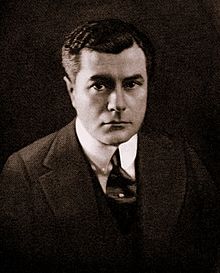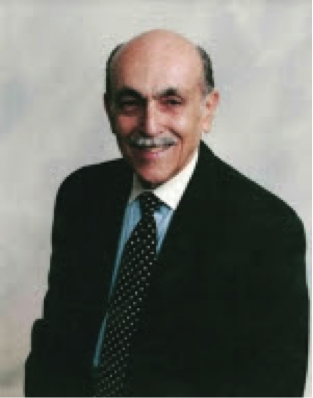
Hotel History: John McEntee Bowman Part 2 During his lifetime career as a hotel developer and operator, John Bowman was a horse lover and a thoroughbred racing enthusiast. He was president of the United Hunts Racing Association and the National Horse Show. For a time, he served as the president of the Havana-American Jockey Club that operated the Oriental Park Racetrack in Marianas, Cuba.
In addition to the six Biltmore Hotels which I described in Nobody Asked Me, But… No. 193, here are the descriptions of ten more Biltmore hotels.
- Flintridge Biltmore Hotel- located in La Canada Flintridge atop the San Rafael Hills in California. Site of the present day Flintridge Sacred Heart Academy campus with some of the historic buildings still in use. Designed by architect Myron Hunt in 1926, in the Mediterranean Revival and Spanish Colonial Revival architectural style. Myron Hubbard Hunt (1868-1952) was an American architect whose projects included many landmarks in Southern California. In 1927, Hunt designed a hotel for Senator Frank P. Flint which was quickly sold to the Biltmore chain of hotels. Due to the Great Depression, the Flintridge Biltmore Hotel was sold in 1931 to the Dominican Sisters of Mission San Jose, who founded the Flintridge Sacred Heart Academy, an all-girls’ day and boarding high school.
- Griswold Hotel- in New London, Connecticut near Groton. It was built by Morton F. Plant, the wealthy philanthropist who was the son of the railroad, steamship and hotel tycoon Henry Bradley Plant. Two years after building his Branford estate, Plant purchased the dilapidated Fort Griswold House on the eastern point of the Thames River and erected a dazzling two-story luxury hotel. With a total of 400 rooms, the Griswold Hotel was 240 rooms larger than the Ocean House in Watch Hill, Rhode Island making it the largest luxury resort hotel in the Northeast. As described in a 1914 Griswold Hotel brochure, the freshest of foods was grown by Plant’s Bradford Farms. The guestrooms, detailed in mahogany, were lit with electricity and provided long-distance telephone service. Dancing was offered nightly and no expense was spared on service, food or décor. In 1919, the Griswold was acquired by Bowman’s Biltmore Hotel company. After the 1929 stock market crash, the Griswold fell on hard times until it was purchased by Milton O. Slosberg in 1956. He added a 3,600 ft. salt water pool and invested a million dollars in upgrades. But in 1962, a botched resale resulted in acquisition by the Pfizer Company which eventually tore the Griswold down. Today, the land belongs to the Shennecossett Golf Course.
- The Belleview-Biltmore Hotel- Belleair, Florida first opened in 1897 as the Belleview Hotel. It was built by Henry Bradley Plant to designs by architects Michael J. Miller and Francis J. Kennard of Tampa. It contained 145 rooms, Georgia pine construction, swiss-style design, a golf course and race track. The Belleview became a retreat for the wealthy whose private railroad cars were often parked at the railroad siding south of the hotel. The Belleview, named the “White Queen of the Gulf”, was the largest wood-frame building in Florida. In 1920, it was purchased by John McEntee Bowman and named the Belleview-Biltmore Hotel. It was listed on the National Registry of Historic Places in 1979, closed in 2009 and demolished in 2015 despite heroic efforts by preservation groups to save it. In its heyday, the Belleview Biltmore attracted presidents George H.W. Bush, Jimmy Carter, Gerald Ford, the Duke of Windsor, the Vanderbilts, the Pew family, the DuPonts, Thomas Edison, Henry Ford, Lady Margaret Thatcher, Babe Ruth, Joe DiMaggio and entertainers Tony Bennett, Bob Dylan and Carol Channing.
- The Miami-Biltmore Hotel, Coral Gables, Florida-was opened in 1926 by John Bowman and George Merrick. In order to create a one-of-a-kind resort hotel, Bowman selected the architectural firm of Schultze and Weaver once again. As Bowman wrote in a 1923 issue of Architectural Forum, “Any well constructed building that will provide adequate shelter and good management bears the responsibility of food and services but for atmosphere-that’s intangible to the well-being and satisfaction of the hotel guest – we must book primarily to the architect.” Schultze and Weaver had Miami experience as the designers of the Miami Daily News Tower (1925), Miami Beach’s Nautilus Hotel (for Carl Fisher) and the Roney Plaza Hotel (for E.B.T. Roney). The Miami-Biltmore Hotel opened with a magnificent gala ceremony that was the social event of the year. An overflow crowd of 1,500 guests attended the opening dinner-dance on January 15, 1926. The Biltmore was one of the most fashionable resorts in the United States. The $10 million project included a golf course, polo fields, tennis courts and an enormous 150 by 225 foot swimming pool. The 18-hole golf course was designed by the famous golf course architect Donald Ross. One of The Biltmore’s big bands was led by the famous Paul Whiteman. The Miami-Biltmore Hotel was one of the most fashionable resorts in the entire country through the late 1920s and early 1930s. Up to 3,000 spectators turned out on Sundays to watch synchronized swimmers, bathing beauties, alligator wrestlers and the four year-old boy wonder, Jackie Ott, whose act included diving into the immense pool from an 85-foot high platform. Before his Hollywood career as Tarzan, Johnny Weismuller was a Biltmore swimming instructor who later broke world records at the Biltmore pool. The Biltmore served as a hospital during World War II and as a Veterans Administration Hospital and campus of the University of Miami Medical school until 1968. It was restored and opened as a hotel in 1987, owned and managed by the Seaway Hotels Corporation. On June 19, 1996 the National Register of Historic Places designated the Biltmore a National Historic Landmark, an elite award earned by only 3 percent of all historic structures.
- The Belmont Hotel, New York, N.Y.- across 42nd Street from Grand Central Terminal was the tallest in the world when built in 1908. It was demolished in 1939.
- The Murray Hill Hotel, New York, N.Y.- on Park Avenue between 40th and 41st Streets. It was demolished in 1947.
- The Roosevelt Hotel, New York, N.Y.- was connected to Grand Central Terminal. It opened as a United Hotel and merged with the Bowman- Biltmore Group in 1929. It was purchased by Conrad Hilton in 1948 and later by the N.Y. Central Railroad until 1980. Today it is owned by Pakistan Airlines and operated by Interstate Hotels and Resorts.
- The Ansonia Hotel, New York, N.Y.- was built as a luxury apartment hotel on the upper west side of Manhattan in 1904. When it opened, The Ansonia was “the monster of all residential hotel buildings”, according to the New York World. The Bowman-Biltmore Group owned and operated the Ansonia from 1915 to 1925. During the first several years of Bowman’s operation, Edward M. Tierney of the Hotel Arlington, Binghamton, N.Y. was managing director of the Ansonia. Later, George W. Sweeney, managing director of the Hotel Commodore was also appointed as manager of the Ansonia.
- The Providence Biltmore Hotel, Providence, Rhode Island- was opened in 1922. It was designed by the architects Warren and Wetmore and operated by the Bowman-Biltmore Hotels chain until 1947 when it was bought by Sheraton Hotels. In 1975, the Biltmore closed and remained vacant for four years. After reopening in 1979, the hotel had a series of owners including Dunfey, Aer Lingus, the Providence Journal, Finard Coventry Hotel Management and AJ Capital Partners. It is now named the Graduate Providence Hotel, has 292 guestrooms and the largest Starbucks in New England.
- The Dayton Biltmore Hotel, Dayton, Ohio- was built in 1929 in the Beaux-Arts style by architect Frederick Hughes. It was considered one of the finest hotels in America and was managed by Bowman-Biltmore Hotels until 1946. Subsequently, it was operated by Hilton Hotels, Sheraton and, in 1974, became the Biltmore Towers Hotel. In 1981, the Kuhlmann Design Group redeveloped the property into elderly housing. On February 3, 1982, the Dayton Biltmore was added to the National Register of Historic Places.
- The Havana Biltmore & Country Club, Havana, Cuba- opened in 1928 and was managed by the Bowman Biltmore Company
My Newest Book
“Built To Last: 100+ Year-Old Hotels West of the Mississippi” is available in hardback, paperback and ebook format.
Ian Schrager writes in the Foreword:
“This particular book completes the trilogy of 182 hotel histories of classic properties of 50 rooms or more… I sincerely feel that every hotel school should own sets of these books and make them required reading for their students and employees.”
This trilogy consists of the following three books:
- Built To Last: 100+ Year-Old Hotels in New York
- Built To Last: 100+ Year-Old Hotels East of the Mississippi
- Built To Last: 100+ Year-Old Hotels West of the Mississippi
All of these books can be ordered from AuthorHouse by visiting www.stanleyturkel.com and clicking on the book’s title.
My Published Books
- Great American Hoteliers: Pioneers of the Hotel Industry (2009)
- Built To Last: 100+ Year-Old Hotels in New York (2011)
- Built To Last: 100+ Year-Old Hotels East of the Mississippi (2013)
- Hotel Mavens: Lucius M. Boomer, George C. Boldt and Oscar of the Waldorf (2014)
- Great American Hoteliers Volume 2: Pioneers of the Hotel Industry (2016)
- Built To Last: 100+ Year-Old Hotels West of the Mississippi (2017)
My Service as an Expert Witness:
For the past twenty-four years, I have served as an expert witness in more than 40 hotel-related cases.
My extensive hotel operating experience is beneficial in cases involving:
- hurricane damage and/or business interruption cases
- slip and fall accidents
- wrongful deaths
- fire and carbon monoxide injuries
- franchisee/franchisor disputes
- management contract disputes
- hotel security issues
- dram shop requirements
Don’t hesitate to call me on 917-628-8549 to discuss any hotel-related litigation support assignments.


